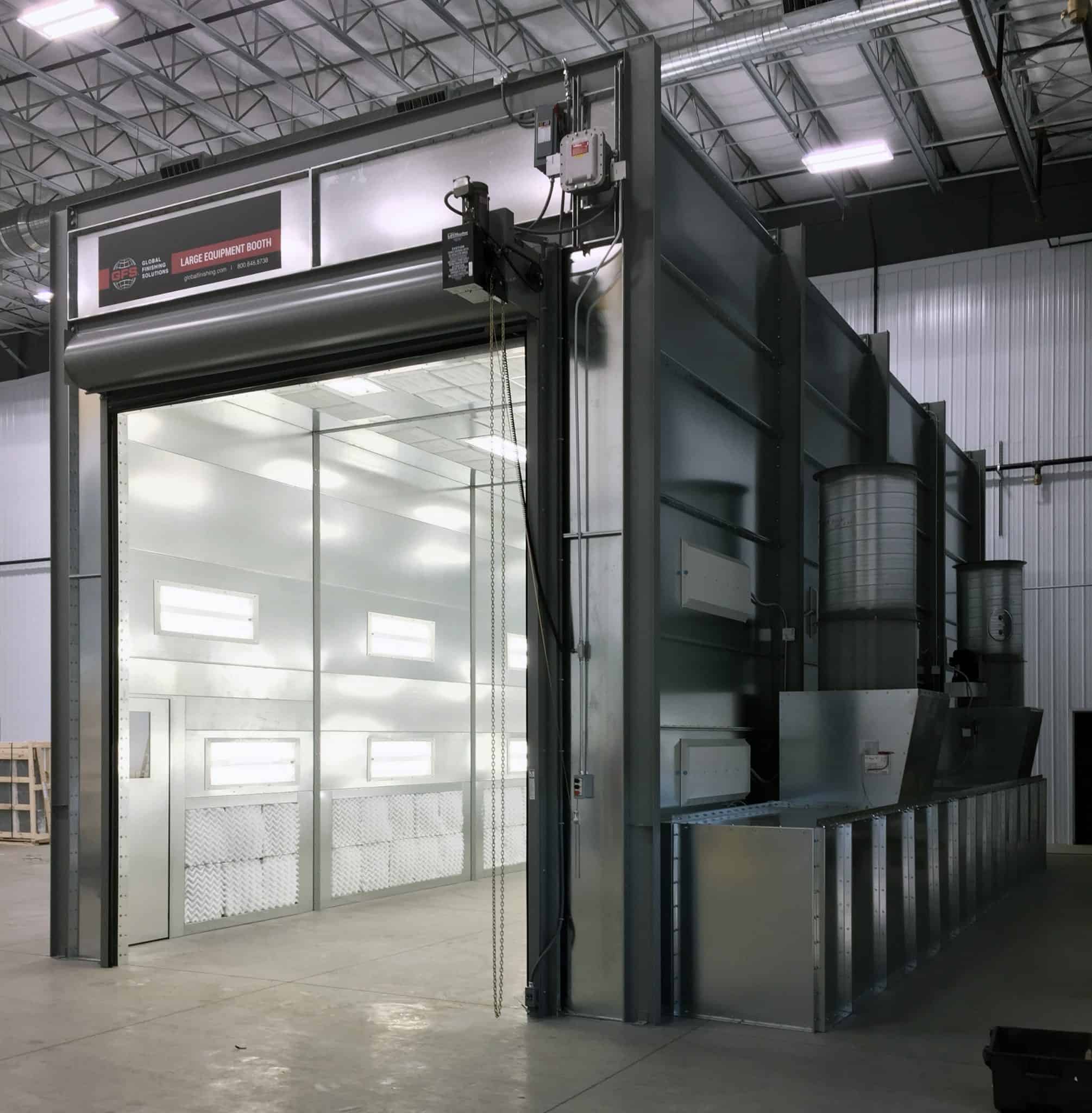
Paint operations often depend on consistency and control to achieve flawless finishes. The difference between a professional coating and a flawed one often comes down to how overspray is managed. Using an industrial paint booth instead of open areas changes the process completely, providing a structured environment that captures particles before they become a problem.
How an Enclosure Channelizes Spray Mist Away from Adjacent Zones
An enclosed booth acts like a sealed corridor for spray mist. The walls, ceiling, and exhaust system form a controlled path that directs atomized paint particles toward filters rather than allowing them to drift into nearby work areas. This confinement reduces cross-contamination between zones and maintains clean surfaces around the spraying section.
In open areas, air currents and human movement easily redirect mist toward unintended spots. The enclosure of a powder coating booth prevents this by defining airflow boundaries and ensuring mist flows to one destination—the filtration system. This containment not only improves coating quality but also creates a safer, cleaner workspace.
Directed Airflow Schemes Capturing Particulate Drift with Intent
Inside a well-designed booth, airflow follows a specific pattern. Fans and ducts are arranged to pull air through the spray zone, guiding overspray toward collection points. The directed movement keeps paint suspended only long enough to be extracted, reducing airborne residue that could interfere with nearby applications.
Such intentional airflow is absent in open environments, where particles move unpredictably and often linger in the air. With advanced powder coating equipment, technicians benefit from air systems that maintain consistent direction and velocity, ensuring overspray is captured quickly and efficiently.
What Filter Labyrinths and Exhaust Plenums Achieve in Particle Extraction
The heart of an industrial paint booth lies in its filtration system. Filters arranged in a labyrinth pattern trap microscopic pigment and resin particles, preventing them from escaping into the workshop atmosphere. Exhaust plenums then pull filtered air out, keeping interior pressure balanced for continuous, clean airflow.
This multi-stage process ensures not only air purity but also operational safety. Filters retain fine powder and solvent-based mists, preventing them from settling on finished parts or causing equipment wear. Without these systems, overspray would spread freely, diminishing both product quality and worker health.
Enclosed Booths Stabilizing Volatile Atmospheres for Consistent Coating Downtime
Within a sealed environment, the atmosphere remains stable from one job to the next. Temperature, humidity, and air velocity can be precisely maintained, allowing coatings to adhere evenly and cure correctly. Controlled atmospheres lead to shorter downtimes between applications and fewer rejected parts due to inconsistent results.
Stabilization is especially valuable during continuous production runs. By maintaining optimal spray conditions, an industrial paint booth supports predictable coating performance, reducing waste and improving cycle times for high-volume operations.
Why Open-space Systems Allow Errant Spray Plumes to Settle Unpredictably
In open spraying setups, paint mist behaves more like smoke than a controlled stream. It drifts with even minor air movements, depositing residue on floors, tools, and nearby parts. This lack of direction results in uneven coating thickness and the potential for defects like blushing or rough textures. The absence of confinement allows spray plumes to interact with environmental factors—fans, ventilation drafts, or even people walking by. Such variables make it impossible to achieve consistent finishes without intensive cleanup afterward. Enclosed booths eliminate these uncertainties entirely.
Overspray Containment Driven by Controlled Intake and Exhaust Rates
Balancing intake and exhaust airflow is one of the most important design aspects of a paint booth. Intake fans bring in filtered, pressurized air, while exhaust fans remove overspray-laden air at a steady rate. This balance creates negative or slightly neutral pressure inside, ensuring particles flow toward filters instead of escaping into the workspace.
In contrast, uncontrolled open-space systems rely on ambient air movement, which changes constantly. Variations in pressure or airflow can cause backdrafts that push particles toward finished surfaces or operator breathing zones. Properly balanced systems in powder coating spray booths prevent that entirely.
How Downward or Cross-draft Designs Compel Overspray Downward Before Settlement
Booth airflow configurations are designed for efficiency. In a downdraft setup, air enters from the ceiling and exits through floor grates, forcing overspray downward before it can spread. Cross-draft designs pull air from one side of the booth to the other, moving particles laterally toward filtration systems without recirculating them. These engineered pathways ensure spray remains in motion only long enough to reach capture points. For high-precision applications using powder coating equipment, this directional flow produces cleaner results and minimizes post-spray cleanup. The efficiency gained through such designs also extends filter life and reduces operational costs.
When Ambient Disturbances in Open Areas Undermine Operator Control and Finish Quality
Air turbulence is the hidden enemy of open-space painting. Even small gusts from ventilation systems or nearby movement can distort the spray pattern, causing uneven coverage or wasted material. This unpredictability not only affects finish quality but also makes the operator’s job harder, requiring constant compensation during application.
Controlled environments remove those disturbances entirely. Inside an industrial paint booth, air is filtered, directed, and maintained at consistent velocity. That control gives operators steady, repeatable results with every pass of the spray gun—something nearly impossible in open surroundings. For manufacturers seeking dependable finishing performance, Reliant Finishing Systems provides the technology and engineering expertise needed to build environments that eliminate overspray inefficiency and enhance coating precision.
